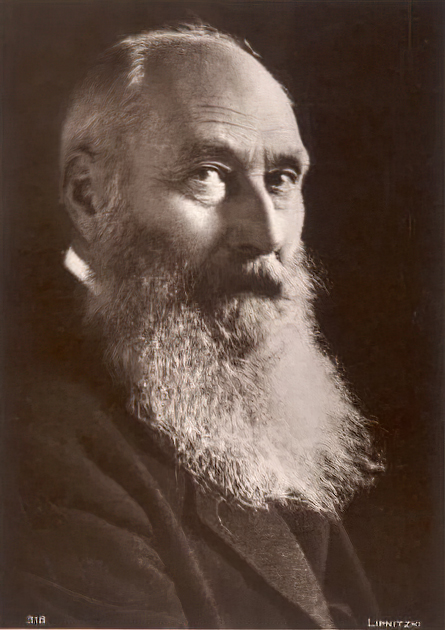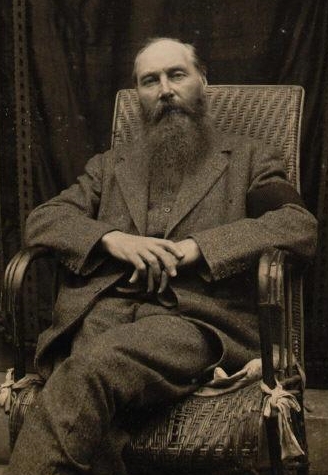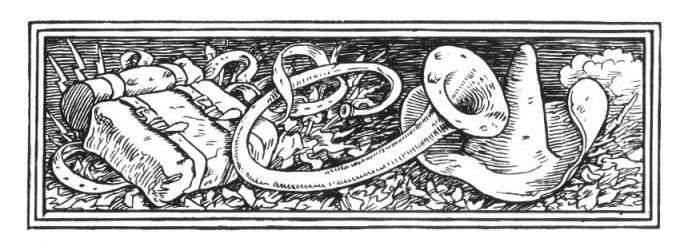1924 – News Highlights
In our original post on Roaring Twenties Woodwind Quintets, we noted two works: Arnold Schoenberg’s Quintet, Op. 26 and Theodor Blumer’s Quintett fuer Blasinstrumente, Op. 52, both finished in 1924. The differences in style of these two works could not be more stark. Blumer’s quintet looks back to the Romantic style and is a wonderful work to perform. Schoenberg’s quintet is his first multi-movement work in the 12-tone style, one of the most forward-looking works of the decade. We have separate posts for each of these works and their composers.
Other than these two quintets, we have one other French quintet to add for 1924.
Ropartz, Joseph-Guy Marie (1864-1955)

Ropartz’s Deux Pièces pour quintette à vent was written in 1924, published by A. Durand et Cie. in Paris in 1926, and premiered in 1927. It is now available from the International Music Score Library Project (not public domain in all countries). It consists of two movements, Lent and Vif, lasting about 9 minutes and 45 seconds.
Joseph-Guy Ropartz was born June 15, 1864 in Guingamp, then part of Côtes du Nord (now Côtes d’Armor) in the peninsula of Brittany in France. He had a long career as a conductor and composer. His family was interested in the arts and young Joseph was attracted to poetry and music, playing bugle, horn and double bass. He studied law and at age 21, moved to Paris to study at the Conservatoire with Théodore Dubois and Jules Massenet and later with César Franck. In 1894 he was made director of the conservatory in Nancy where he improved instruction and regularly conducted concerts.
His success in Nancy led to him being appointed head of the Strasbourg Conservatoire in 1919. Strasbourg, the capitol of Alsace-Lorraine, had been occupied by the Germans from the end of the Franco-Prussian War in 1871 to the end of World War I, so Ropartz’s goal there was to return French musical life to the Conservatory and to the region. He retired in 1929, went back to Brittany, and composed until 1950, going blind before his death in November 22, 1955. He wrote over 200 works during his long life, ranging from an opera, ballets, 5 symphonies and other orchestral works, works for voice, string chamber music and piano, and one piece for woodwind quintet.

Most of Ropartz’s career was spent away from Paris, so he never became as famous as those who engaged in Parisian culture and politics.
Although he studied with some of the best teachers of late Romantic French music, he later forged his own style, often evoking his native Brittany with modal scales and tone colors associated more with the Impressionists and later adopting the neo-Classic style. We see that in his Deux Pièces pour quintette à vent, apparently his only chamber work for winds. Although the harmonies, particularly in the first movement, evoke a light Impressionistic sound, the piece also reflects the French Neo-Classic style, presenting a few challenges in balance, intonation and dynamics – as seen by some of the performances on YouTube. There are a couple of commercial recordings of this quintet, but I suspect there is still plenty of room for a good recording of Ropartz’s work for any ensemble willing to create an interpretation that brings out the Impressionistic quality of the work and a quick, lilting quality to the second movement. Although this quintet doesn’t have the serious mien of its other rivals for 1924, it is a unique work in the quintet literature, worth trying if your ensemble wants to do a deep dive into early 20th century French wind music.

Recordings & Credits
A performance of the Deux Pièces pour quintette à vent is available on YouTube by the Quintet à Vents Sanislas, performed by Olivier Sauvage, flute; Pierre Colombain, oboe; Philippe Moinet, clarinet; Pierre Riffault, horn; and Nicolas Tacchi, bassoon.
A performance by an unnamed quintet is performed by Ana Maria Ribeiro, flute; Aldo Salvetti, oboe; Carlos Alves, clarinet; Hugo Carneiro, horn; and Gavin Hill, bassoon, recorded in a live performance at the Palacio do Bolsa, in Porto, Portugal, actually brings out more of the Impressionist mood of the work. The live recording is a bit noisier, unfortunately.
There are also commercial recordings by the Boehm Quintette and the Danish Wind Quintet.
The opening photo of Ropartz, is from the website of the Centre de Musique Romantique Française in the Palazzetto Bru Zane in Venice.
The image of Ropartz sitting in a chair is from Wikipedia.
The cover illustration of Ropartz, Magnard and Ysaye is also from the archives of the Centre de Musique Romantique Française in the Palazzetto Bru Zane in Venice. Musica magazine of February, 1912
Copyright © 2024 by Andrew Brandt

